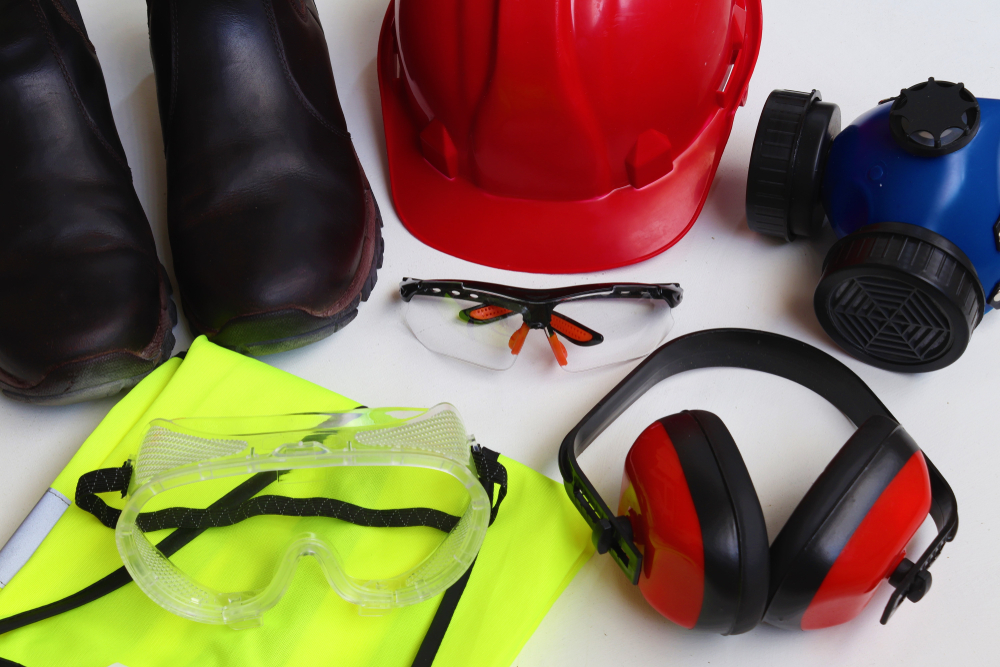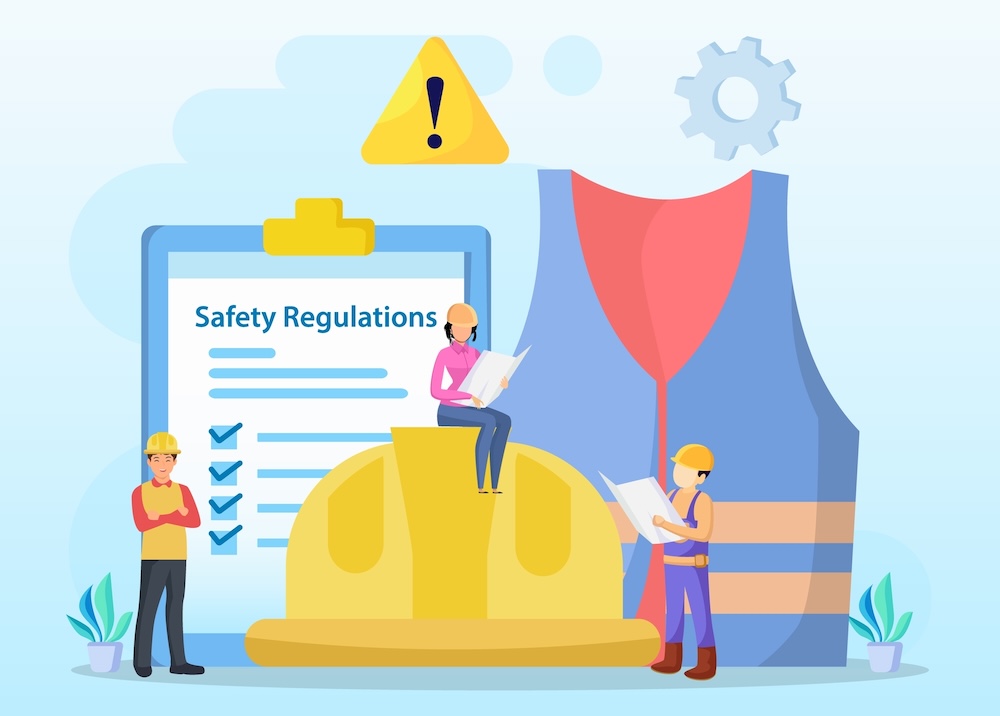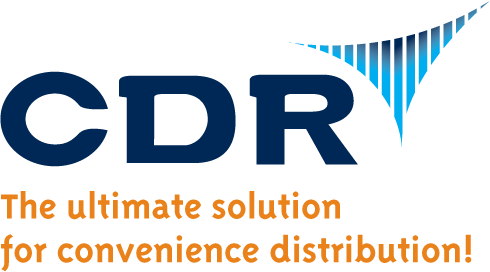Concerned about safety incidents in your warehouse? Here’s how to reduce risks, protect your team, and stay compliant—without disrupting your operations.
In the fast-paced world of convenience distribution, it’s easy to prioritize speed and efficiency above all else. But without a strong focus on safety, even a single incident can lead to costly delays, injured employees, or damaged goods. A safe warehouse isn’t just a regulatory requirement—it’s the foundation of smooth operations and long-term success.
Warehouses that handle convenience store inventory face unique safety challenges. From fast-moving pickers navigating narrow aisles to handling a wide variety of products—some heavy, some perishable, some fragile—the potential for accidents is real. Add in seasonal rushes and temporary staff, and the risks increase if safety isn’t front and center.
The good news? Building a safer warehouse doesn’t have to be complicated or disruptive. With the right training, tools, and systems in place, you can reduce risks and keep your team safe while improving productivity.
In this post, we’ll walk through practical safety tips and best practices tailored to the convenience distribution industry—covering everything from training and equipment to technology and compliance.
#1. Establish a Strong Safety Culture
Creating a safe warehouse starts with creating the right mindset. Safety can’t just be a checklist item—it needs to be part of your company culture, embraced by everyone from leadership to the warehouse floor.
Leaders set the tone. When management demonstrates a commitment to safety—by following protocols, investing in training, and responding quickly to concerns—it shows the team that safety is a priority, not a formality.
Encourage your staff to speak up about potential hazards or unsafe behaviors without fear of blame. Open communication is one of the strongest defenses against accidents. Regular safety meetings, suggestion boxes, and anonymous reporting systems can help foster that culture of trust.
It also helps to recognize safe behaviors. Whether it’s a simple shoutout during a morning huddle or a monthly reward for incident-free shifts, acknowledging safety-conscious actions reinforces their importance.
Finally, consider putting your commitment to safety into writing. A clear, easy-to-understand safety policy—visible and accessible to all employees—helps ensure everyone’s on the same page and accountable.
#2. Prioritize Ongoing Training and Certification
Even the best safety policies fall short without proper training. Your team needs to know how to work safely—and that takes more than a one-time orientation.
Start with a strong onboarding process for new hires, covering safe lifting techniques, proper use of equipment, emergency procedures, and how to report hazards. But don’t stop there—safety training should be continuous.
Regular refresher courses help keep safety top of mind, especially in busy or high-turnover environments. Short, focused safety huddles at the beginning of shifts are a great way to reinforce key practices and keep your team engaged.
Make training practical and relevant. Tailor sessions to specific roles—pickers, forklift drivers, loaders—and use real scenarios from your own warehouse when possible. Interactive training tends to stick better than a slide deck.
And don’t forget certifications. Ensure that forklift operators and other equipment users have up-to-date credentials, and make sure these are tracked and regularly reviewed—whether by your HR department or another designated team. Keeping clear records helps prevent lapses and supports overall warehouse safety.
#3. Use the Right Safety Equipment—and Maintain It

The right equipment can make all the difference when it comes to preventing injuries and accidents. From personal protective gear to material handling tools, each item plays a role in creating a safer warehouse environment.
Start with the basics: ensure every team member has access to appropriate personal protective equipment (PPE). This may include safety gloves, steel-toe boots, high-visibility vests, hard hats, or back supports—depending on their tasks and environment. Make sure PPE is in good condition and replaced as needed.
Equipment maintenance is just as critical. Forklifts, pallet jacks, and conveyor systems should be inspected regularly and repaired promptly. A malfunctioning forklift isn’t just inefficient—it’s dangerous. Set up a routine maintenance schedule and ensure issues are logged and addressed quickly.
Racking systems should also be checked for stability and damage. Overloaded or improperly installed racks can collapse, posing serious risks to both products and people.
Finally, consider ergonomic equipment and tools. Items like adjustable workstations, anti-fatigue mats, or lift-assist devices can help reduce strain-related injuries and improve comfort—especially for employees performing repetitive tasks.
Proactive investment in safety equipment doesn’t just reduce accidents—it boosts morale and productivity too.
#4. Improve Warehouse Layout and Organization
A well-organized warehouse isn’t just efficient—it’s also much safer. Poor layout and cluttered spaces increase the risk of slips, trips, collisions, and product damage, especially in high-traffic zones common in convenience distribution.
Start by assessing your warehouse flow. Are fast-moving items stored in easily accessible areas? Are aisles wide enough for both foot traffic and equipment to move safely? Small layout changes can prevent congestion and make a big impact on safety.
Use clear signage and floor markings to direct traffic and highlight hazards. Mark forklift lanes, pedestrian walkways, and restricted zones with bright, durable tape or paint. When employees know exactly where to walk—and where not to—accidents are less likely to happen.
Clutter is another common culprit. Make sure storage areas are kept tidy, and that tools, equipment, and empty pallets are returned to their designated spots. Implement a regular housekeeping routine and encourage all team members to take responsibility for maintaining clean, safe work areas.
Also, review your shelving and storage systems. Heavier or high-demand products should be stored at waist level to reduce strain. Fragile items should be clearly labeled and stored securely to prevent falls or breakage.
Improving layout and organization not only reduces risk—it also creates a more efficient and stress-free environment for your team.
#5. Leverage Technology for Proactive Safety Management
Safety isn’t just about policies and protective gear—it’s also about having the visibility to spot risks early and the tools to respond quickly. That’s where technology becomes a powerful ally.
With the right systems in place, you can streamline warehouse processes, reduce manual errors, and gain real-time insight into your operations. Technologies like barcode scanning, RFID, and warehouse automation help improve inventory accuracy and reduce the chance of mispicks, misplaced items, or handling mistakes—all of which contribute to a safer work environment.
Data visibility also plays a key role. Real-time dashboards and operational reports can help you identify patterns, such as areas with frequent congestion or higher rates of product damage. With this information, you can make targeted adjustments to reduce risk and improve workflow.
Systems like CDR Software’s DAC ERP support safer operations by giving you the tools to stay organized, monitor key processes, and improve accountability across your warehouse.
Technology can’t replace strong leadership or training—but it can enhance your safety program and help create a more efficient, lower-risk environment.
#6. Stay Up to Date on Regulatory Compliance

Regulatory compliance is more than a box to check—it’s a key part of running a safe and responsible warehouse. For convenience distributors, staying aligned with OSHA standards and any applicable state or local regulations helps protect your team and your business.
Start by making sure your safety policies are documented and accessible. This includes emergency procedures, PPE requirements, equipment operation guidelines, and protocols for reporting incidents or near misses. Clear documentation supports training efforts and helps keep everyone accountable.
Regular audits—whether internal or with a third-party consultant—can uncover gaps and give you the opportunity to fix them before they become liabilities. These audits can also serve as preparation for unannounced inspections by regulatory agencies.
Don’t forget that safety regulations can change. Keep someone on your team responsible for monitoring updates from OSHA or industry groups, and review your policies annually to ensure they remain current.
An ERP system like DAC ERP can support your compliance efforts by helping document equipment maintenance, organize operational data, and maintain digital records—all essential for demonstrating due diligence and staying audit-ready.
Being proactive with compliance isn’t just smart—it builds trust with your team and creates a safer environment for everyone.
#7. Create an Emergency Preparedness Plan
Even with the best safety practices in place, emergencies can still happen—and when they do, preparation can make all the difference. A clear, well-communicated emergency plan helps protect your team and minimize disruption when the unexpected occurs.
Start by identifying the types of emergencies your warehouse may face—fires, chemical spills, severe weather, power outages, or medical incidents—and create specific response procedures for each. Make sure evacuation routes, emergency exits, and assembly points are clearly marked and free from obstruction at all times.
Assign roles to team members ahead of time. Who’s responsible for guiding evacuations? Who handles first aid? Who communicates with emergency services? Having a designated response team ensures a coordinated and calm reaction when every second counts.
Emergency drills should be held regularly to keep everyone familiar with the procedures. Drills not only reinforce your plan but also highlight areas that may need improvement.
Ensure emergency equipment—like fire extinguishers, eyewash stations, and first aid kits—is visible, accessible, and routinely inspected. Consider posting quick-reference guides in key areas to make it easier for employees to act fast in a crisis.
When your team knows exactly what to do in an emergency, they can respond with confidence—not confusion.
CDR Software Can Help You Maintain a Safer Warehouse
While warehouse safety starts on the floor, having the right systems in place can make safety management far easier and more consistent. CDR Software’s DAC ERP includes several features that support safer, more organized operations—especially for the unique demands of convenience store distribution.
With DAC ERP, you can:
- Track and manage warehouse equipment using DAC Equipment Manager, which helps reduce loss and damage and ensures equipment is ready when needed.
- Improve inventory accuracy and reduce handling errors with integrated barcode scanning and RF warehouse systems.
- Enhance layout and organization through dynamic putaway, replenishment, and real-time product tracking.
- Gain visibility into operations with intuitive dashboards and reporting tools to monitor productivity and spot trends.
While DAC ERP doesn’t replace hands-on safety training, it complements your safety efforts by helping you run a more efficient, well-organized warehouse—where risk is minimized and productivity thrives.
Conclusion: A Safer Warehouse Is a More Efficient One
Creating a safe warehouse isn’t just about avoiding accidents—it’s about building a stronger, more resilient operation. When your team feels secure, they work more confidently and efficiently. When your equipment is well-maintained, your workflows stay smooth. And when your safety practices are proactive, you reduce costly downtime and disruption.
For convenience distributors, where speed and precision are everything, safety can’t be left to chance. By building a strong safety culture, investing in training and equipment, and using the right systems to support compliance and visibility, you can create a safer workplace—and a more productive one too.
Ready to take warehouse safety to the next level? Contact us today to learn how DAC ERP can support your safety goals while improving your operations overall.
FAQs:
What are the most common warehouse safety risks?
Common risks include slips and falls, equipment accidents, improper lifting, and collisions in high-traffic areas.
How can I improve warehouse safety for my distribution team?
Start with strong training programs, clear safety policies, proper equipment maintenance, and consistent enforcement of safety procedures.
What role does ERP software play in warehouse safety?
An ERP system can support warehouse safety by improving operational visibility, streamlining workflows, and reducing manual errors. Features like inventory tracking, equipment management, and real-time reporting help teams stay organized, minimize risks, and maintain a well-run, safer warehouse environment.
How often should warehouse safety training be done?
Training should be part of onboarding and repeated regularly—monthly huddles, quarterly refreshers, and annual certifications are common.
Why is warehouse layout important for safety?
A well-organized layout reduces congestion, improves visibility, and separates foot traffic from forklifts, reducing the risk of accidents.


